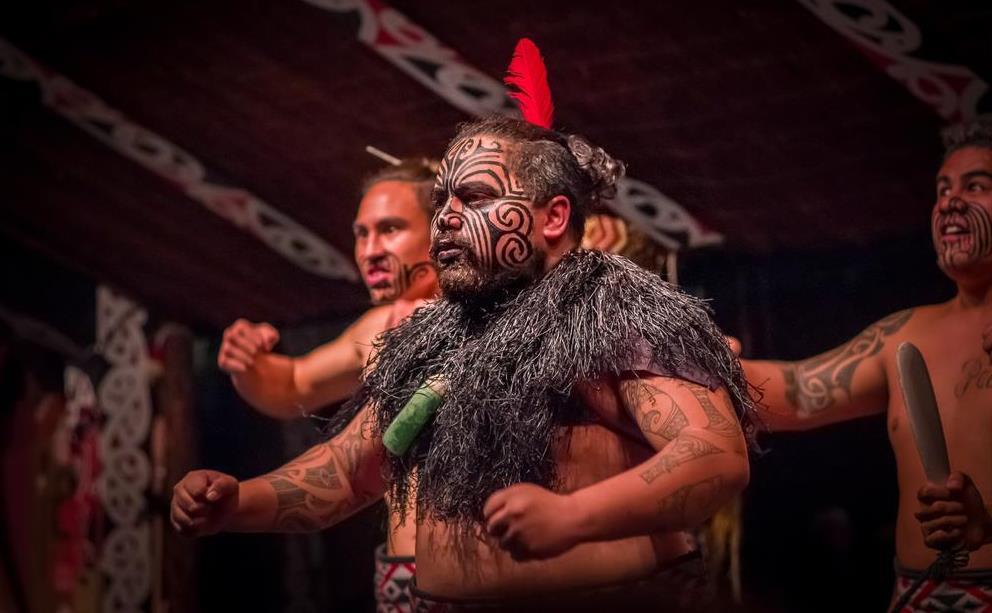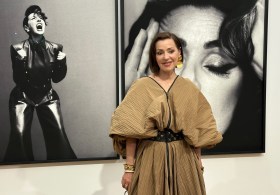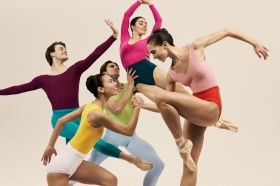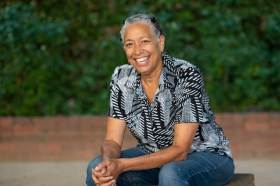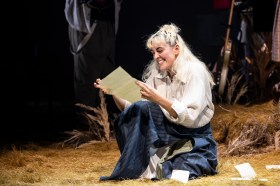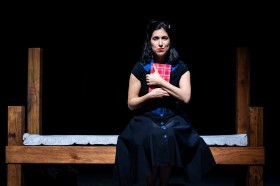The creativity community knows the arts matter. So too does the rest of the country.
The findings of Creative New Zealand’s triennial survey New Zealanders and the Arts – Ko Aotearoa me ōna Toi, have just been revealed, with what’s being touted as one of the most in-depth bodies of research into the impact the arts is having on the nation as a whole.
And the news is mostly positive for the sector.
In a nutshell
The survey – conducted with more than 6,600 participants by Colmar-Brunton last year (the largest sample in the survey’s history) – provides independent research into New Zealanders’ attitudes towards, attendance at, and participation in the arts
The findings show New Zealanders are more positive than ever about the vital role the arts play in our lives, despite COVID-19.
While there’s a resounding positive sentiment towards the creative fields, New Zealanders’ engagement with the arts has taken a hit as a well-documented impact of the pandemic.
Despite attendance at the arts declining somewhat, participation has held steady, and how the people of Aotearoa want to experience the arts is changing.
Three years in the making
This research has been ‘a labour of love’ for CNZ’s Senior Manager of Strategy and Engagement David Pannett. It’s been conducted every three years over the last 15 years – today’s release is the sixth edition.
He tells The Big Idea: ‘I think there will be a general curiosity about how New Zealanders are seeing the arts. Quite often, people in the sector will hear feedback about their work – their latest offering – but perhaps not as much about those broader views that New Zealanders hold towards the things they care about as well. There’s something in it for everyone really.’
This year’s findings have also – for the first time – included separate, dedicated reports on Māori, Pasifika and Asian New Zealanders’ relationship with the arts, as well as New Zealanders with lived experience of disability.
Pannett explains: ‘Over time, we’ve gradually increased the level of focus into particular communities. Last time it was providing regional reports for the first time – that shone a light on how different parts of the country were feeling about the arts.’
He continued: ‘We’ve always surveyed and included in the main report information about Māori, Pacific and Asian New Zealanders. This time, it was important for us to tell a richer story – we hope it provides useful information that helps organisations and practitioners with their own advocacy work, their own way they think about how their communities are engaging with their arts.’
‘Adding in New Zealanders with lived experience of disability was really important to us as well, expanding our understanding of how particular communities engage with the arts, the benefits they bring and the challenges that community might bring in accessing the arts. It’s important for us to keep evolving this research, what it covers, who it’s talking about and to,’ said Pannett.
The stats:
There is so much to take in and will be examined by many – including here on The Big Idea –
in the days and weeks to come. We’ll start by looking at some of the stand out points of the survey.
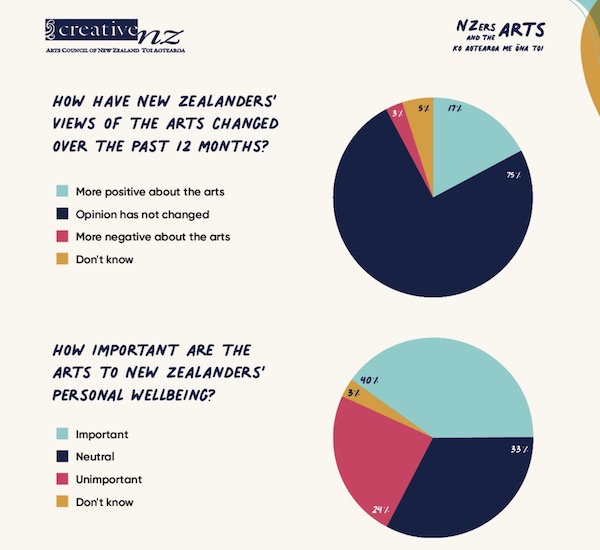
Image: Creative NZ.
Attendance
It’s been one of the most talked-about and concerning factors for the sector – particularly for the performing arts. With COVID making live performances anywhere between difficult to impossible over the past 18 months.
So it will mostly come as no surprise to those at the coalface that attendance fell by 5% compared to 2017 – down to 68% – largely through a decline in performing arts attendance.
Pannett says ‘It’s definitely something we need to watch – it’s always consistently hovered around that 75-80% mark –
it’s the largest drop we’ve seen in a long time … The lockdown experience opened a few new windows, experiencing the arts at home and digitally. The way people want to engage with the arts is changing but we’re still in that process of watching and waiting to see where things might settle.’
Participation
While attendance dipped, active participation held its ground. Overall, 52% of all adult New Zealanders (aged 15+) participated in the arts in the previous 12 months, exactly the same as in 2017.
Young New Zealanders’ participation (aged 10–14) remains almost universal, at 98%.
Pride in the arts
Artists and art lovers often feel under-appreciated in this country, with headlines in mainstream media often lacking and pay rates poor compared to many other industries.
But those surveyed show a different light.
One of the biggest moving stats is that 64% agree that the arts help define who we are as New Zealanders – that’s up 10% on 2017.
The arts are also a source of pride for Aotearoa, with 80% of people agreeing that they feel proud when New Zealand artists succeed overseas.
Pannett surmises that could be a positive side effect of lockdown. ‘In general, it gave people the ability to reflect on what’s important to them – what are the essential things that make us special as a group of people and as a country. An understanding of what the arts are is much more varied and vibrant and we’ve seen that flourishing re-engagement, not just in lockdown but coming back to live performance and live events with such gusto over summer.’
Pannett remarks: ‘Taking all of these things together as a package, it paints a really nice picture of the growing appreciation of the role the arts have in NZ, and its ability to bring us together as a nation. It’s not just about big sports matches and stadiums any more.’
The new research
As previously mentioned, it’s the first time that dedicated reports have been conducted for Māori, Pasifika and Asian New Zealanders’ relationship with the arts, as well as New Zealanders with lived experience of disability.
For Māori, Pasifika and Asian New Zealanders, the arts provide a strong connection to culture.
According to the research, seven out of ten Māori (70%) agree that the arts are an important way of connecting with their culture and identity.
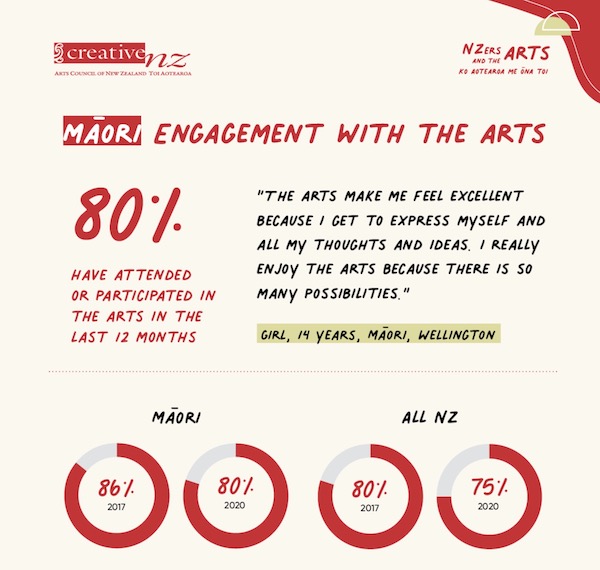
Image: Creative NZ.
Around seven out of ten Pasifika people (71%) agree that the arts are an important way of connecting with their culture.
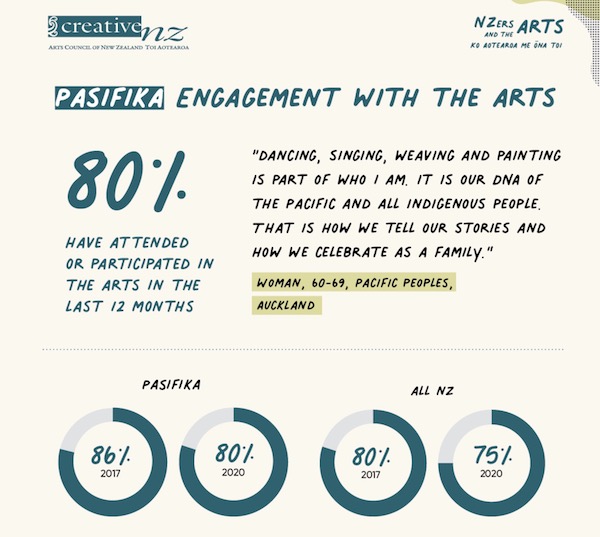
Image: Creative NZ.
For Asian New Zealanders, 67% agree that the arts are an important way of connecting with their culture (compared to the national average of 54%).
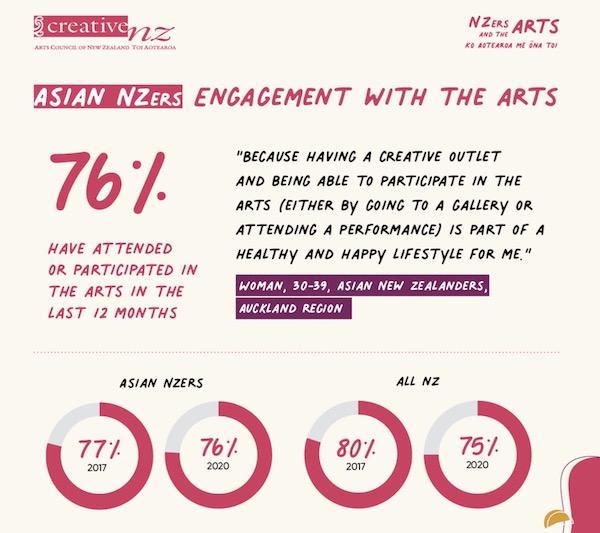
Image: Creative NZ.
76% of people with lived experience of disability have engaged with the arts (attended and participated) in the last 12 months. This is in line with the national average (75%)
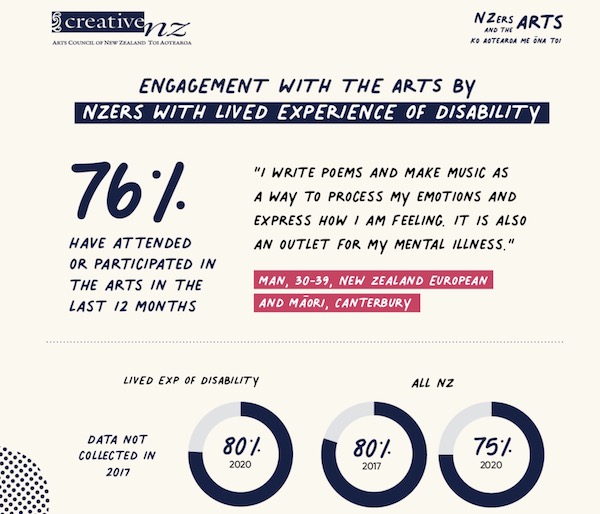
Image: Creative NZ.
More to come
While these findings will be digested and examined for some time to come –
Pannett has told The Big Idea that there will be more information drop later this year.
There’s a second piece of research called Audience Atlas that’s coming in the next 3 months, more aligned with market development opportunities and how arts organisations build up their audiences, what kind of people are interested in coming to experience particular art forms – which we don’t often get to hear.’
The full suite of reports from New Zealanders and the Arts — Ko Aotearoa me ōna Toi can be found on Creative New Zealand’s website.
This story was originally published by The Big Idea, NZ.
